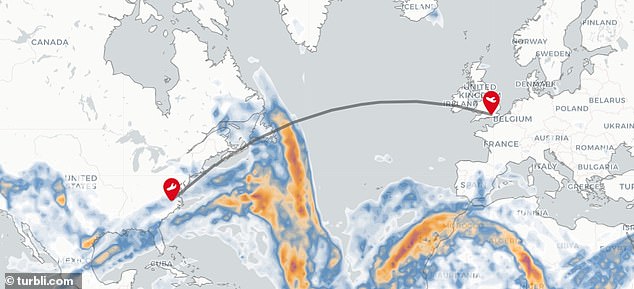The most and least turbulent countries in the world so far in 2024 have been revealed, and it is Bhutan where planes have experienced the roughest air, with Antarctica ranked as the least turbulent area in 172nd place.
Just above Antarctica are Svalbard (171), Russia (170), Greenland (169) and Canada (169).
The United Kingdom is ranked 150th, the United States is 68th and Australia is 64th.
The list has been prepared by turbli.comwith data relating to turbulence averages in January 2024.
Turbli assigned the rankings using the same data sources that pilots and airlines use to plan their flights, “data that comes from advanced weather models developed by the National Oceanic and Atmospheric Administration (NOAA) and MetOffice.”
The most and least turbulent countries in the world so far in 2024 revealed
After Bhutan, the rest of the top 10 are made up of Guinea-Bissau (second), Senegal (third), Cape Verde (fourth), Nepal (fifth), Gabon (sixth), Guinea (seventh), Congo (eighth), Cameroon (ninth) and Sierra Leone (tenth).
The most turbulent continental European country in 2024 is Spain, which ranks 42nd.
In addition to a ranking of the “most turbulent countries,” Turbli.com features an interactive map that forecasts turbulence levels for any given flight route.
The map, updated every six hours, provides forecasts for the current time and three, six, nine or 12 hours into the future, at altitude levels between 4,200 m (13,800 ft) and 11,800 m (38,700 ft), which is a cruise . altitude for many passenger aircraft.
Turbulence is marked in ‘heat map’ color gradations ranging from light blue to blue and orange to red.
Blue indicates light turbulence, and orange to red indicates moderate to strong or severe turbulence.

Bhutan is the country where planes experienced the roughest air in 2024

Nervous travelers now have a powerful tool to help make their next flight even more enjoyable: an interactive map that forecasts turbulence levels on their route. The map covers the entire world and is courtesy of turbli.com, which explains that it uses the same data sources that pilots and airlines use to plan their flights.
Turbli.com says that slight turbulence equals “smooth flight”; moderate potholes mean “difficulty walking and with food services”; ‘strong’ produces ‘strong tensions against seat belts’; and “severe” turbulence causes “sudden, violent changes in altitude.”
Turbulence can also be defined as “extreme”, but in this case an airplane is “virtually impossible to control” and would be extremely rare. The kind that drivers may never encounter in their careers.
One of the most useful features of the interactive map is that you can add landmarks.
Enter the start and end points of a flight and a flight path will appear so users can see if it passes through any patches of turbulence. Click “get forecast” and the site will display a turbulence graph for the trip.
Turbli.com also offers three static turbulence maps: for the world, the United States, and Europe.
These offer forecasts in steps from three hours to 24 hours into the future.


